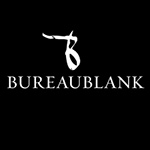 There’s a good bit of (proper) railing against silos, but have we considered why they’re sometimes so comfortable? They serve an isolated efficiency in a functional area and the positive results of “business as usual” can lull an organization away from innovating when narrow but visible goals are met. Adding to that, there’s another, often hidden, silo not always considered: collectively, the beneficiary silo. The enterprise opportunity in cutting across functions and incorporating original data and design input from end users allows the identification of new opportunities to benefit citizens. See the following example from the communications firm, BureauBlank, as our guest author Lara Mossler offers a quick look from research to execution at the creation of a first of its kind in an application/rewards-based game using city data from the New York City Department of Probation (DOP).
There’s a good bit of (proper) railing against silos, but have we considered why they’re sometimes so comfortable? They serve an isolated efficiency in a functional area and the positive results of “business as usual” can lull an organization away from innovating when narrow but visible goals are met. Adding to that, there’s another, often hidden, silo not always considered: collectively, the beneficiary silo. The enterprise opportunity in cutting across functions and incorporating original data and design input from end users allows the identification of new opportunities to benefit citizens. See the following example from the communications firm, BureauBlank, as our guest author Lara Mossler offers a quick look from research to execution at the creation of a first of its kind in an application/rewards-based game using city data from the New York City Department of Probation (DOP).
…
Creating a simple, memorable digital tool that balances the needs and interconnected relationships of NYC DOP, community stakeholders and probation clients was challenging. The research would be done “on the ground” and in-person. The idea had to be focused and amplified by a distilled list of features and UX that is simple and delightful. The look and the feel of the app needed to feel empowering, personalized and have its own unique identity and branding. Finally, the momentum emerging from everyone involved had to be organic and authentic in order to launch the app with success.
The app is designed to encourage positive behavior change in clients by incentivizing participation in community goals. Probation clients digitally track and earn points for items that community leaders enter into the app. It’s customizable and reward-based. Interviews with clients themselves revealed that they use gamified apps frequently. As a result, MyNeON is designed as a mobile experience to accommodate as many devices as possible (including tablets). It’s also accessible as a URL from public desktop computers in NeONs.
The app does not just facilitate the activity in Neighborhood Opportunity Networks (NeONs), it also generates useful data. This is critical because, according to The Council of State Governments, “Policy makers also lack geographic analyses about which benefits and services are being invested and coordinated in neighborhoods where many people under criminal justice supervision live.” MyNeON, the app, not only captures information about items taking place in each neighborhood but also records how many individuals earned points for attending.
This is the simplest data, and there is plenty of room for expansion. However, the data tells a clear story that helps NYC DOP create relevant community partnerships. It helps answer critical questions: How fast are clients completing certain goals? What kinds of community goals are not represented in certain locations?
…
